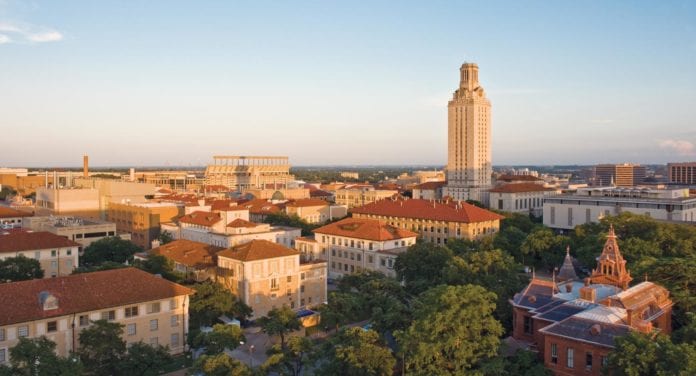AUSTIN, Texas – Connecting the wireless industry with cutting-edge academic research is the mission of The University of Texas at Austin’s Wireless Networking and Communications Group, and today the group’s signature event is the stage for AT&T’s first public demonstration of “5G” millimeter wave technology. With help from Ericsson, AT&T has been testing its next-generation network technology in its Austin lab for months, and is now sharing it for the first time. The demo system uses large system bandwidth, analog beam forming with beam selection, feedback-based hybrid precoding, 4×4 multiple-input/multiple-output and dynamic beam tracking, beam acquisition.
AT&T’s 5G demo is just one part of today’s Texas Wireless Summit. The summit’s primary focus is one of the most compelling 5G use cases: automated vehicles.
“Automated vehicles are all the rage right now, but the angle we’re taking is about how they talk to each other, how they sense their environment and how we can use machine-learning techniques to help them understand and tag their environment and start to make sense of the fields they’re moving through,” said UT’s Todd Humphreys, assistant professor in the department of aerospace engineering.
Featured speakers at the Texas Wireless Summit include Qualcomm’s Sanjiv Nanda, who discusses enabling technologies for autonomous vehicles, and UT Professor Peter Stone on the intersection of automated vehicles and artificial intelligence.
Constantine Caramanis, associate professor in UT’s department of electrical engineering, said the summit has three areas of focus related to the connected car: communications, sensing, and data analytics. Data analytics, which is Caramanis’ focus, must occur in a compressed time frame to support autonomous vehicles.
“My focus is on understanding how you can find patterns in massive data and be able to do that in a way that respects the time scales that are appropriate for the particular applications,” said Caramanis. “I think that the safety-critical aspects of the autonomous vehicle and the potential for massive connectivity is really going to test the limits of what we can do in terms of machine learning and data analytics on the platform.”
Caramanis and Humphreys, co-organizers of this year’s summit, are both researching autonomous vehicles. Caramanis focuses on machine learning and analytics and Humphreys focuses on sensor technologies.
“I’m interested in how the vehicle locates itself and how it determines whether there’s an impending collision,” said Humphreys. “Not only that, but how to do these location and collision avoidance tasks robustly so that glare from the sun or a jamming event or something doesn’t totally derail the vehicle. … If you think about automated vehicles, how accurately do they need to know their location, in a relative sense, in a global sense? I believe that’s about at the decimeter level, three or four inches, because you’d like to keep these cars in their lane. If they slip into the next lane, or any part of them slips into the next lane, there could be a collision.”
The Wireless Networking and Communications Group has formed a working group that will focus on sensing, communication and analytics for automated vehicles. The working group, called SAVES, grew out of WNCG’s collaboration with UT’s Center for Transportation, and will be inaugurated at the summit.
Startups that are focused on automotive technologies and services also will be part of this year’s Texas Wireless Summit. Ten handpicked startups will compete for a $5,000 prize sponsored by Rohde & Schwarz.

